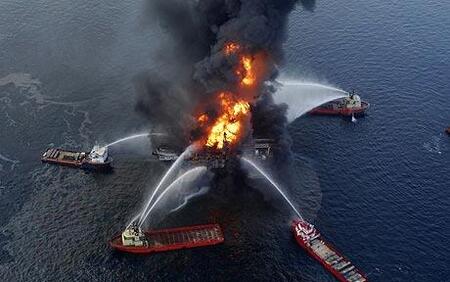 More than 10 years after the Deepwater Horizon exploded and spilled 134 million gallons of oil into the Gulf of Mexico, the waves are hitting Wall Street. BP is now giving alternative energy serious attention. And on Tuesday, a $2.3 trillion institutional investor uprising emerged against ExxonMobil.
More than 10 years after the Deepwater Horizon exploded and spilled 134 million gallons of oil into the Gulf of Mexico, the waves are hitting Wall Street. BP is now giving alternative energy serious attention. And on Tuesday, a $2.3 trillion institutional investor uprising emerged against ExxonMobil.
The Coalition for a Responsible Exxon – with a snappy acronym – fired a salvo across Exxon’s board in a letter to leadership.
CURE is demanding a commitment to a financially competitive and environmentally sustainable future at Exxon, a press release announced.
“For too long Exxon has ignored both the desires of its key stakeholders and the financial risks and opportunities of the transition happening in energy markets toward cleaner, more sustainable forms of energy,” CURE said in its letter.
The call for change at the top arrived the same day Exxon reported the largest losses in its history as the pandemic crushed energy demand — nearly $20.1 billion for the fourth quarter. For the full year, it lost $22.4 billion.
BP lost $18.1 billion in 2020.
The letter also arrived one day after Exxon announced a new business, ExxonMobil Low Carbon Solutions, that will focus on carbon capture and storage to help achieve the “climate goals outlined in the Paris Agreement.”
CURE’s action seems hardly symbolic – not like, say, PETA putting a few grand into SeaWorld to gain a voice at annual meetings.
 As of Jan. 26, CURE claims over 135 institutional investors – banks, mutual funds, insurance companies, pension and hedge funds, REITs, others – that represent $2.27 trillion in assets.
As of Jan. 26, CURE claims over 135 institutional investors – banks, mutual funds, insurance companies, pension and hedge funds, REITs, others – that represent $2.27 trillion in assets.
According to CURE, its global spectrum of stakeholders (yes, the Franciscan Sister of Allegany, N.Y., are aboard) are all focused on “delivering long-term returns” involving the changing energy sector.
Past environmental catastrophes, including the Exxon Valdez (1989) and Bhopal (Union Carbide, 1984), were relatively short-term investor setbacks, according to research cited by Mark Hulbert in MarketWatch in 2015.
BP took a little longer to bounce back, Hulbert said. But by mid-2014, BP’s stock, including dividends, was fully recovered – four years after April 20, 2010, when the Deepwater rig exploded.
In September, BP chief executive Bernard Looney announced the biggest overhaul in strategy in the company’s 111-year history. Highlights include a 40% reduction in oil and gas production in the next decade and more wind and solar energy ventures.
“Our new strategy is going to transform BP into a very different company, not overnight … but fast,” Looney said.
Looney acknowledged in a Wall Street Journal story there were “a few concerns, some skepticism and even a few myths” about the overhaul.
Widening climate awareness, changing personal values, and respect for the needs of future generations give CURE some momentum. Corporate accountability is trending upward.
U.S. assets using so-called “socially responsible” strategies were $12 trillion at the start of 2018, expanding 42% to $17.1 trillion at the start of last year.
That represents 33% of total U.S. assets under professional management, according to the Forum for Sustainable and Responsible Investment.
Regarding Exxon’s new initiative, Darren Woods, chairman and chief executive officer, touted the corporation’s “leadership in carbon capture and emissions reduction technologies.”
“ExxonMobil is committed to meeting the demand for affordable energy while reducing emissions and managing the risks of climate change,” Woods said.
Outside
Bitcoin mining emissions in China will hit 130 million tonnes by 2024 https://t.co/w6He7so8N2 pic.twitter.com/qYUDtBdeRK
— New Scientist (@newscientist) April 9, 2021
The Gunk Report
For the Blue-Green Algal Bloom Weekly Update from the Florida Department of Environmental Protection, tap here. For DEP's Algal Bloom Sampling Map, tap here.
What, me worry?
» "PLAYING WITH SHARKS," which recently premiered at the Sundance Film Festival, documents diving legend Valerie Taylor.